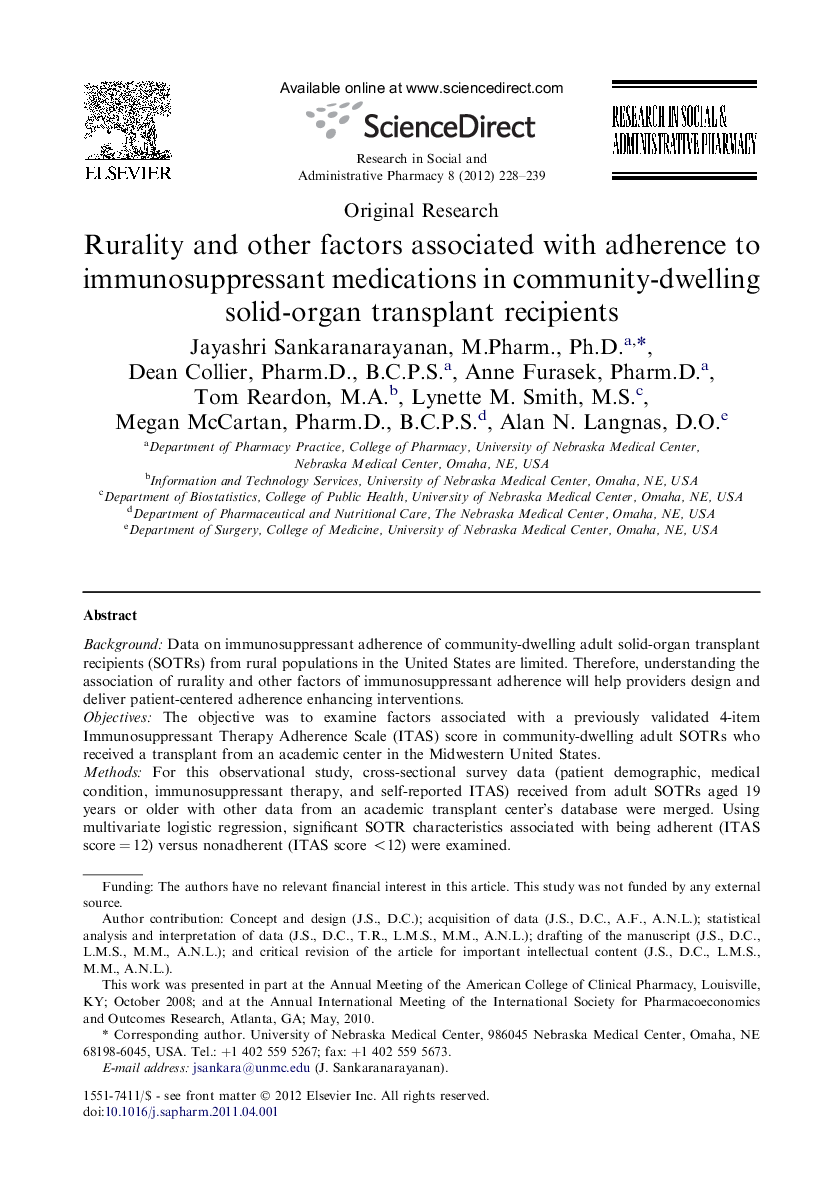| Article ID | Journal | Published Year | Pages | File Type |
|---|---|---|---|---|
| 2509024 | Research in Social and Administrative Pharmacy | 2012 | 12 Pages |
BackgroundData on immunosuppressant adherence of community-dwelling adult solid-organ transplant recipients (SOTRs) from rural populations in the United States are limited. Therefore, understanding the association of rurality and other factors of immunosuppressant adherence will help providers design and deliver patient-centered adherence enhancing interventions.ObjectivesThe objective was to examine factors associated with a previously validated 4-item Immunosuppressant Therapy Adherence Scale (ITAS) score in community-dwelling adult SOTRs who received a transplant from an academic center in the Midwestern United States.MethodsFor this observational study, cross-sectional survey data (patient demographic, medical condition, immunosuppressant therapy, and self-reported ITAS) received from adult SOTRs aged 19 years or older with other data from an academic transplant center’s database were merged. Using multivariate logistic regression, significant SOTR characteristics associated with being adherent (ITAS score = 12) versus nonadherent (ITAS score <12) were examined.ResultsThe survey response rate was 30% (n = 556/1827). Those SOTRs responding (n = 556) had a kidney (48%), liver (47%), or other (4.5%) transplant. They were more likely to be 50- to 64-year olds (52%), men (55%), white (90%), metroresident (59%), with an annual income less than $55,000. The SOTRs were living with a transplant for 6.3 years (median), reported excellent-to-good health status (77%), and received different immunosuppressant regimens. More than half of the SOTRs (58%) were adherent. In multivariate analyses, compared with patients aged 65 years or older, younger patients, nonmetro rural- versus metroresident, and those having more (≥6) versus less (<6) comorbidities were significantly less likely to report adherence. SOTRs receiving tacrolimus-based combination immunosuppressant versus tacrolimus alone were more likely to report adherence.ConclusionsWhen designing and delivering patient care-centered interventions including those that use technology to increase immunosuppressant adherence, providers need to consider rural residence besides other well-established patient factors (younger age, immunosuppressant drug, and comorbidities) of nonadherence.
